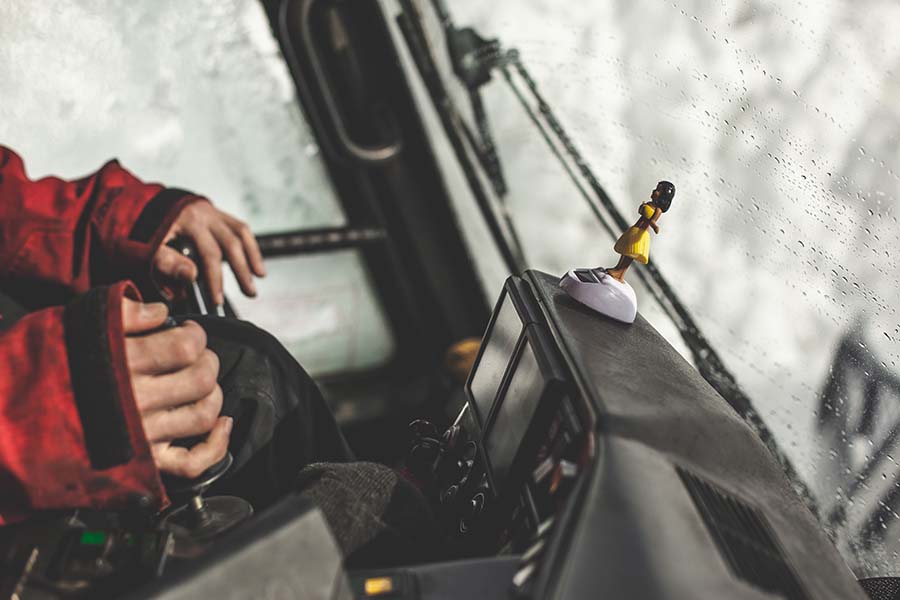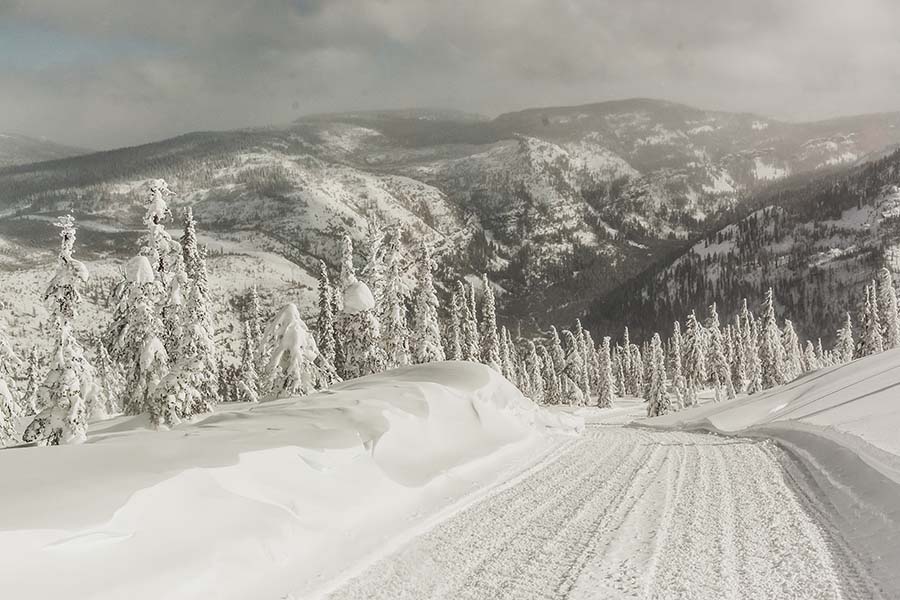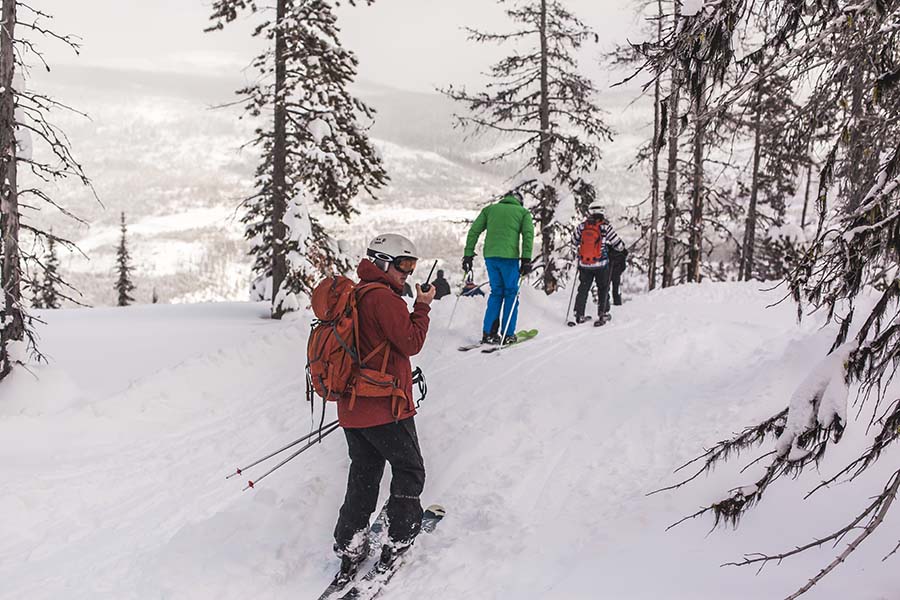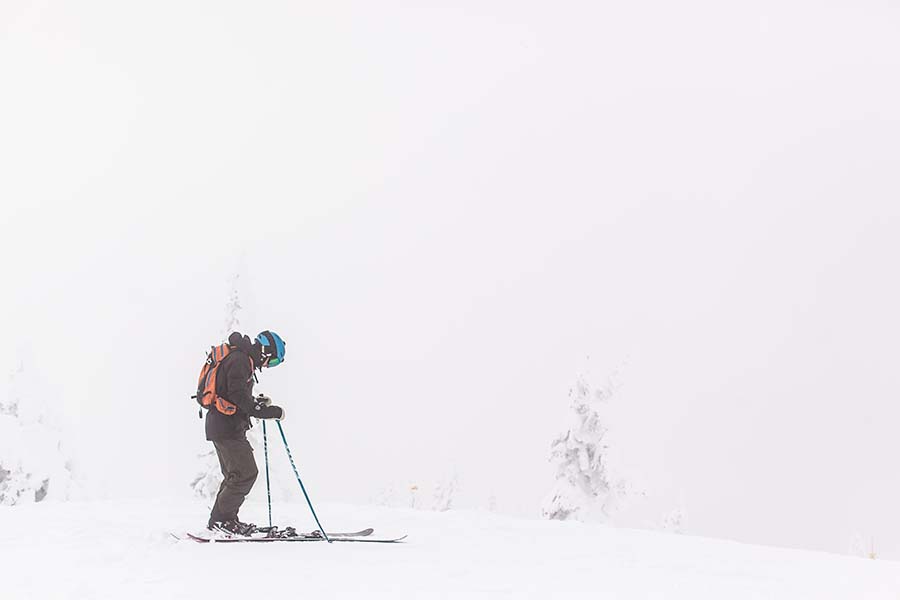- About
- Courses
-
Destinations
EuropeNew Zealand
- Journal
- Contact
Bounding through pristine backcountry powder is the holy grail of every dedicated snow junkie but how can you make that dream a reality?
Cheaper than a chopper but equally epic, cat skiing is the way to get your fix. Here’s everything you need to know about getting started with snow-catting.
Words can't fully describe the experience of boarding through waist deep powder and picking your own untracked line through the trees and open glades. With so much terrain to pick from we never used the same run twice. I've never surfed, but having tasted the spray of powder snow in my face as I made my way down the hill I think I have a better appreciation of what surfing must be like.

What is cat skiing?
Cat skiing is a form of guided backcountry exploration, taking you away from the borders of controlled ski areas to ride through untouched powder. Rather than using a helicopter to access the backcountry, a snowcat acts as your lift, which makes it far cheaper than heli-skiing for an equally heroic outcome.
Snowcats take you up the mountain on purpose-built snow roads, drop you off at the top for a guided descent through virgin snow, and pick you up again at the bottom to do it all again. Cat ski operations have access to enormous backcountry areas, and untracked powder is all-but guaranteed.
Snowcats are basically like the 'piste bashers' you see grooming the snow in ski resorts, but converted to enable them to carry passengers. Ours could carry up to 14 people and, apart from getting us to the top of each run quickly, it allowed us to store gear and refuel on food and liquids between runs in comfort, maximising the number of runs we got in the day.

What to expect
A typical day starts fairly early, around 8am. You'll be briefed by the snowcat operations in their cabin, warmed by the log fire and a cup of tea. Avalanche safety is paramount, so your guides will go through the essentials and check that you’re confident using your equipment.
With safety formalities out of the way, it’s snowcat time. There’s always a great buzz as you load your kit onto the back of the cat and cram into the cabin with your 12-strong group: that smell of fresh mountain air, the rev of the engine, and the steep climb into untracked terrain.
The cat will drop you at the top of a mountain and, once it’s disappeared, you’ll be surrounded by nothing but mountains, blue skies, and miles of untouched powder. This is true backcountry.

Once your guide has outlined the boundaries (‘that tree to your left, the drop-off to your right’), you’re ready for your first descent. Riding in pairs, you and your buddy will pick a line and start floating through the freshest, lightest powder imaginable, making smooth turns and effortless jumps all the way to the bottom.
As each pair descends, the group reassembles at the bottom of the run, everyone brimming with adrenaline. A few minutes later, you’ll be back in the snowcat, heading up to find fresh tracks and do it all again.
By the end of the day (probably around 3-4pm) you’ll most likely have completed 8-12 runs. Exhausted but buzzing, you’ll be ready for a beer in the back of the cat and some good food at the lodge. Despite the exhaustion, the chatter never lets up. And that incredible buzz goes on and on.
How good do you need to be?
Skiers and snowboarders should consider themselves advanced. You should be comfortable making consistent turns in off-piste terrain, trees, and powder snow.
Before each descent your guide will show you the different line options available, from steeper pitches to more mellow gradients, and make known any hazards such as drops or cliffs. This way, you can pick a line that matches your level.
What equipment do you need?
Full avalanche gear is provided. You’ll be equipped with all the essentials – a transceiver, probe and shovel – and you’ll have the option to rent other equipment like ABS (avalanche air bag system) and powder skis. If you’ve not used any backcountry equipment before, you’ll be shown the basics before you head off.
With the fresh snow and absence of ski patrol, the risk of avalanches increases so every member of the group wears a transceiver.

How to prepare
Getting you technically ready for the demands of cat skiing or boarding is a core feature of all Nonstop programs. Many people who join us have little or no prior off-piste experience, but you’ll be fully prepared for the backcountry by the end of your program.
Our all-mountain courses are based in the legendary resort of Fernie, BC. Famed for its adventurous terrain and powder dumps, here you’ll find the perfect location to hone your snow skills. Our expert instructors coach you to ski or snowboard in all conditions, from fresh powder to chopped-up snow. You’ll also learn how to pick the best line, control your speed and maximise the off-piste terrain.
Cat skiing with Nonstop
Our all-mountain camps in Canada include the opportunity to go cat skiing/boarding and put your fresh skills and newfound confidence to the test. On our courses in Fernie we use Fernie Wilderness Adventures, who operate in over 5,000 acres of backcountry heaven. The guides have access to a vast range of terrain, from ridges and valleys to spectacular gladed meadows. An elevation of over 7,150 ft / 2,170 metres keeps the snow falling from the coast and the powder dry for the quintessential Canadian powder experience.
Top locations for cat skiing
As the home of cat skiing, British Columbia in Canada has the best range of snow-cat opportunities in the world. There are a few operators in Europe and the Southern Hemisphere but the options are limited. Here are our top picks:
Get started with cat skiing
Chat with the experts at Nonstop to find out more about cat skiing on our instructor courses or improvement courses in Canada.
We look forward to speaking with you.